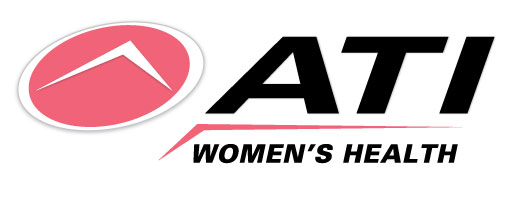Pelvic Organ Prolapse
Pelvic Organ Prolapse (POP) is the descent of one or more pelvic structures/organs through the vaginal and rectal openings from their normal anatomical position. Although POP is more common in older women, it can affect women of all ages. Research shows that its cause is multifactorial (i.e. the effects of aging, vaginal childbirth, decreased muscle strength, etc.). At ATI Women’s Health, we understand how POP can negatively influence physical activity, self-image and ultimately quality of life.
Find a Location and Get Started
Physical Therapy may help! Our physical therapists have advanced, specialized training in the management and treatment of symptoms and dysfunction associated with pelvic organ prolapse. We are devoted to providing one-to-one care with individualized treatment programs in a peaceful and supportive environment.
Types of pelvic organ prolapse treated (but not limited to):
- Anterior vaginal wall prolapse
- Cystocele
- Urethrocele
- Cystourethrocele
- Posterior vaginal wall prolapse
- Rectocele
- Enterocele
- Apical prolapse
- Vaginal vault prolapse
- Uterine/cervix prolapse
- Enterocele
- Rectal prolapse
- Perineal descent syndrome
How can physical therapy help?
The goal of physical therapy is to normalize abdominal and pelvic floor muscle tone/activity, motor control and coordination to assist in improving the support and strength of the pelvic floor musculature and aid in reducing symptoms associated with pelvic organ prolapse. Pelvic floor muscle contractions (commonly known as Kegels) will be incorporated once involved musculature is in its optimal length and neuromuscular control is present. In addition, education regarding proper bladder/bowel habits, postural needs and ergonomics may positively influence rehabilitative outcomes. ATI Women’s Health physical therapists seek to provide the optimal treatment to address individual concerns or needs.
Treatment options vary by condition and may include:
- External and internal soft tissue mobilization, myofascial and trigger point release, connective tissue manipulation, visceral mobilization
- Neuromuscular re-education using electromyographic and tactile biofeedback for downtraining and/or uptraining the pelvic floor musculature
- Instruction regarding normal voiding mechanics
- Instruction regarding normal defecation mechanics (coordination of abdominal muscle contraction for a gradual increase in intra-abdominal pressure combined with pelvic floor muscle relaxation)
- Behavioral training, bladder/bowel education, postural training and self-management techniques
- Treatment of related lumbosacral, hip, SI joint, coccyx and pelvic girdle conditions
- Electrical stimulation, TENS, ultrasound, heat/cold therapy
- Comprehensive home exercise program instruction
